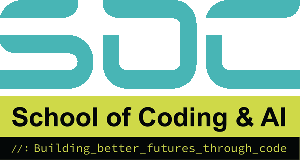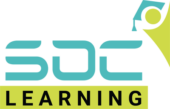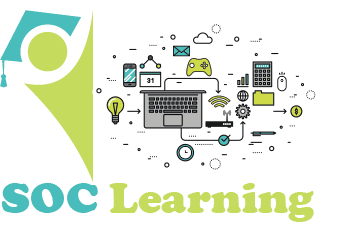Introduction
Are you considering studying programming to improve your data analysis, machine learning, and statistical computing skills? Look no further than learn R programming. R is a strong open-source programming language that is frequently used by data scientists, analysts, and academics. Whether you’re a novice or an established expert, studying R may help you advance your career and problem-solving skills.
In this blog, we’ll look at seven compelling reasons to learn R programming and how mastering it may lead to new prospects in the field of data research and analysis.
7 Powerful Reasons to Learn R Programming Today
1. Dominance in Data Science & Statistical Computing
R is a highly popular programming language for data research and statistical analysis. Many businesses and academic institutes rely on R for data visualisation, statistical modelling, and predictive analytics.
2. An extensive library of packages
R has approximately 18,000 packages available on CRAN (Comprehensive R Archive Network), spanning a wide variety of functions from data manipulation to machine learning.
3. Easy Data Visualisation & Reporting
One of R’s most notable capabilities is its ability to generate high-quality visualisations. ggplot2 and plotly make it simple to create interactive graphs, charts, and dashboards.
4. A highly sought-after skill in the job market
Many sectors rely on data-driven decision-making, therefore R is an important ability for job advancement. Top organisations like Google, Facebook, and Microsoft utilise R for data analysis and modelling.
5. Open-Source & Community-Driven
R is fully free to use and has a large global community of developers, statisticians, and data aficionados that help it expand.
6. Efficient integration with other technologies
R interfaces well with Python, SQL, Hadoop, and other big data technologies, making it ideal for large-scale data processing and analytics.
7. Great for Academia & Research
R’s robust statistical skills make it popular in education, research, and scientific investigations. Universities and institutions use R for data analysis, hypothesis testing, and predictive modelling.
Conclusion
Anyone interested in data science, analytics, or research can benefit greatly from learning R programming. R continues to be a popular choice for professionals throughout the world due to its robust statistical capabilities, broad package ecosystem, and expanding employment demand.
Whether you’re a student, researcher, or industry professional, now is the time to learn R programming and take advantage of the unlimited opportunities it provides.
Frequently Asked Questions
Understanding R programming’s primary function—statistical computation, data visualisation, and advanced analytics—is the first step in learning the language. Installing R and RStudio (a well-known interface), learning basic grammar, and creating simple scripts are all good places for beginners to start. The next stage is to investigate R’s robust libraries, which include caret for machine learning, dplyr for data manipulation, and ggplot2 for visualisation. Practical experience with actual datasets is the most effective method. Many students find it helpful to start with modest assignments like creating basic statistical models, visualising financial data, or evaluating survey results. Participating in workshops, practising frequently, and joining coding communities all aid in solidifying comprehension.
R has a large library of packages and built-in statistical functions, making complicated data analysis and modelling simple.
Your career objectives will determine whether you choose R or Python. R’s strong statistical analysis and visualisation features make it a popular choice for research, academia, healthcare, and finance. Predictive modelling, bioinformatics, and data exploration are its strong points. In contrast, Python is a flexible language that is utilised in data analysis, automation, machine learning, artificial intelligence, and web development. R might be a better option if statistics, research, or advanced analytics are your primary areas of interest. Python, however, might be more helpful if you’re searching for a more comprehensive set of technological and artificial intelligence skills. Since the two languages are complementary and highly regarded in the computer sector, many workers decide to study both.
Some of the most powerful R programs are:
- ggplot2, which provides outstanding data visualisation.
- dplyr allows for efficient data manipulation.
- caret stands for machine learning.
- Shiny is for interactive web apps.
Yes! R Markdown and Shiny help you produce professional, interactive reports and dashboards that can be shared online.
Learning R creates openings for careers such as:
- Data scientist
- Data analyst
- Business intelligence analyst
- Machine learning engineer
There are several online forums, tutorials, and courses accessible, including R’s official documentation, Stack Overflow, and the R community on GitHub.
Yes! Many data professionals combine R and Python for various tasks, taking use of each language’s capabilities.
Absolutely! Many scholars use R to publish articles, analyse databases, and perform experiments in subjects such as economics, biology, and medicine.
Due to its distinct syntax from other languages, R programming has a reputation for being a little difficult at first. It gets considerably simpler, though, if you comprehend its reasoning and goal. R’s functions are quite intuitive for those working with data because it was created with statisticians and data scientists in mind, unlike general-purpose languages. For instance, one line of code can be used to draw a graph or compute an average. R is frequently very easy for those who have experience with spreadsheet programs like Excel or even maths or statistics. Even total novices can learn R efficiently with the correct instruction and regular practice.
Your starting position and learning objectives will determine how long it takes you to learn R programming. The fundamentals of R can be learnt in a few weeks by someone with previous coding or data analysis knowledge. It could take novices two to three months to become comfortable manipulating data, writing code, and producing visuals. It could take six months to a year of regular practice to get to an advanced level, such creating predictive models or becoming proficient with statistical libraries. Instead of just memorising commands, the secret is consistent, project-based learning in which you use R to address real-world problems.
There are a number of great free resources available for learning R programming. Among the top free resources are:
- The Comprehensive R Archive Network, or CRAN: You can browse packages, manuals, and tutorials in the official repository.
- Coursera and edX (audit mode): Numerous academic institutions, such as Harvard and Johns Hopkins, offer free audits for their introductory R courses.
- Kaggle: Offers free datasets and R tutorials so you may practise and participate in data competitions.
- Stack Overflow and R-bloggers: These are excellent communities for reading tutorials, finding solutions to issues, and interacting with R specialists.
- Open-source lessons and YouTube channels: Step-by-step demonstrations might be helpful for visual learners.
Beginner-friendly R programming courses are also offered by organisations such as the School of Coding & AI for organised and encouraging learning, guaranteeing that students receive supervised instruction in addition to practice opportunities.








